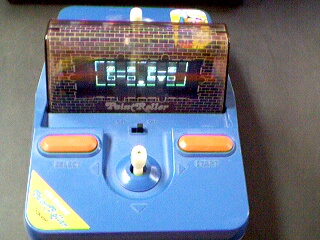There seems to be some people who connect personal mobile tech into spiritual practices around the world (genevieve bell at Intel as claimed by matt jones and smart mobs). Spirituality and mobile phone is a nice topic but there is something weirder: It reminds me this news from 2004:
A Wirral paranormal investigator has rubbished claims that mobile phones are chasing away ghosts. Tony Cornell, of the Society for Psychical Research, says the number of spooky sightings started to decline with the introduction of mobiles 15 years ago. (…) He reckons it’s all down to a lack of TV programmes like The X-Files rather than mobile phone microwaves in the atmosphere. He said: ‘In the run-up to the year 2000 there was loads of stuff on the telly about the paranormal and that made the public more aware. ‘But now people may have an experience and not realise that it’s of a paranormal nature. And, anyway, we use lots of hi-tech equipment in our research and that has no effect. Good solid reliable ghosts are there and they are as hard as ever to catch.’

 The second is
The second is  What is nice in these 2 examples is that there used to be simple interface (with a screen in example 1 and without in example 2) to support tabletop head-to-head game. Now everybody is struggling to find ultra hype interfaces (tangible or not), with crazy interactive tables/walls/carpets/bathrooms/put whatever you want here/chairs... I am a bit nostalgic of the diversity/creativity of electronic games at that time: so many companies, so many interfaces, so many colors/forms...
What is nice in these 2 examples is that there used to be simple interface (with a screen in example 1 and without in example 2) to support tabletop head-to-head game. Now everybody is struggling to find ultra hype interfaces (tangible or not), with crazy interactive tables/walls/carpets/bathrooms/put whatever you want here/chairs... I am a bit nostalgic of the diversity/creativity of electronic games at that time: so many companies, so many interfaces, so many colors/forms... What's interesting here is the technology they use which is based on the detection of Bulk Acoustic Waves. It's then a kind of communicating glass.
What's interesting here is the technology they use which is based on the detection of Bulk Acoustic Waves. It's then a kind of communicating glass.



 This
This 







 Why do I blog this? Actually, military material is normally way ahead video games (as well as other innovation factors like sex/cybersex) in terms of innovative interface, but here it seems that video games offered the most interesting solution first. It's nice to see that now specific products are based on a standard derived from video games. From an interaction design point of view, this kind of fact is great. I would like to know more about the development process. Well, they certainly did some focus groups and studied how people control things, with.. video games (with all thise buzz lately about serious games and military training, that's for sure). And this raises new questions like how will tomorrow's technology developers/interaction designers take into account today's use of technology. As a matter of fact, if we rely on the idea that today's styles of interaction styles is based on yesterday's way of interactings (knobs, pad...) we can assume that... in the near future... militaries will use gestural/embodied/situated/location-triggered interfaces??????????
Well let's see.
Why do I blog this? Actually, military material is normally way ahead video games (as well as other innovation factors like sex/cybersex) in terms of innovative interface, but here it seems that video games offered the most interesting solution first. It's nice to see that now specific products are based on a standard derived from video games. From an interaction design point of view, this kind of fact is great. I would like to know more about the development process. Well, they certainly did some focus groups and studied how people control things, with.. video games (with all thise buzz lately about serious games and military training, that's for sure). And this raises new questions like how will tomorrow's technology developers/interaction designers take into account today's use of technology. As a matter of fact, if we rely on the idea that today's styles of interaction styles is based on yesterday's way of interactings (knobs, pad...) we can assume that... in the near future... militaries will use gestural/embodied/situated/location-triggered interfaces??????????
Well let's see.